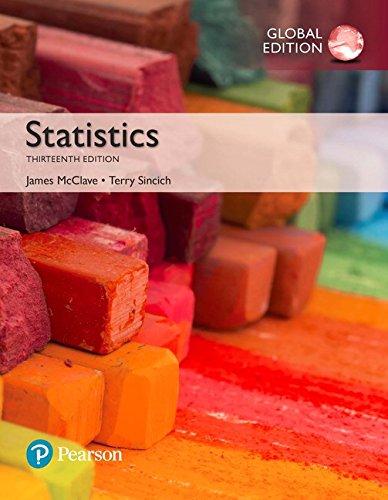Sale prices of apartments. A Minneapolis, Minnesota, real-estate appraiser used regression analysis to explore the relationship between
Question:
Sale prices of apartments. A Minneapolis, Minnesota, real-estate appraiser used regression analysis to explore the relationship between the sale prices of apartment buildings sold in Minneapolis and various character istics of the properties. Twenty-five apartment buildings were randomly sampled from all apartment buildings that were sold during a recent year. The table on p. 792 lists the data collected by the appraiser. [Note:
The physical condition of each apartment building is coded E (excellent), G (good), or F (fair).]
a. Write a model that describes the relationship between sale price and number of apartment units as three parallel lines, one for each level of physical condition.
Be sure to specify the dummy-variable coding scheme you use.
b. Plot y against x1 (number of apartment units) for all buildings in excellent condition. On the same graph, plot y against x1 for all buildings in good condition.
Do this again for all buildings in fair condition. Does it appear that the model you specified in part a is appropriate?
Explain.
c. Fit the model from part a to the data. Report the least squares prediction equation for each of the three building condition levels.
d. Plot the three prediction equations of part c on a scatterplot of the data.
e. Do the data provide sufficient evidence to conclude that the relationship between sale price and number of units varies with the physical condition of the apartments?
Test, using a = .05.
f. Check the data set for multicollinearity. How does your result affect your choice of independent variables to use in a model for sale price?
g. Consider the first-order model E1y2 = b0 + b1 x1 + g+ b5 x5. Conduct a complete residual analysis for the model to check the assumptions on e.
Code No.
Sale Price y ($)
No. of Apartments, x1 Age of Structure, x2 (years)
Lot Size x3 (sq. ft.)
No. of On-Site Parking Spaces, x4 Gross Building Area x5 (sq. ft.)
Condition of Apartment Building 0229 90,300 4 82 4,635 0 4,266 F 0094 384,000 20 13 17,798 0 14,391 G 0043 157,500 5 66 5,913 0 6,615 G 0079 676,200 26 64 7,750 6 34,144 E 0134 165,000 5 55 5,150 0 6,120 G 0179 300,000 10 65 12,506 0 14,552 G 0087 108,750 4 82 7,160 0 3,040 G 0120 276,538 11 23 5,120 0 7,881 G 0246 420,000 20 18 11,745 20 12,600 G 0025 950,000 62 71 21,000 3 39,448 G 0015 560,000 26 74 11,221 0 30,000 G 0131 268,000 13 56 7,818 13 8,088 F 0172 290,000 9 76 4,900 0 11,315 E 0095 173,200 6 21 5,424 6 4,461 G 0121 323,650 11 24 11,834 8 9,000 G 0077 162,500 5 19 5,246 5 3,828 G 0060 353,500 20 62 11,223 2 13,680 F 0174 134,400 4 70 5,834 0 4,680 E 0084 187,000 8 19 9,075 0 7,392 G 0031 155,700 4 57 5,280 0 6,030 E 0019 93,600 4 82 6,864 0 3,840 F 0074 110,000 4 50 4,510 0 3,092 G 0057 573,200 14 10 11,192 0 23,704 E 0104 79,300 4 82 7,425 0 3,876 F 0024 272,000 5 82 7,500 0 9,542 E
Step by Step Answer:





